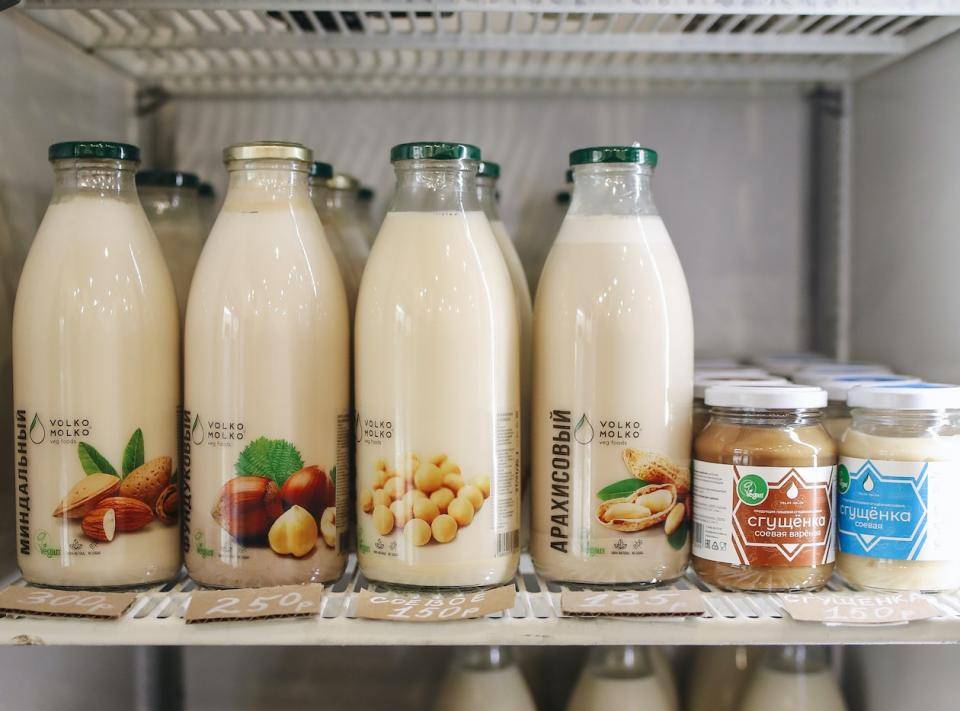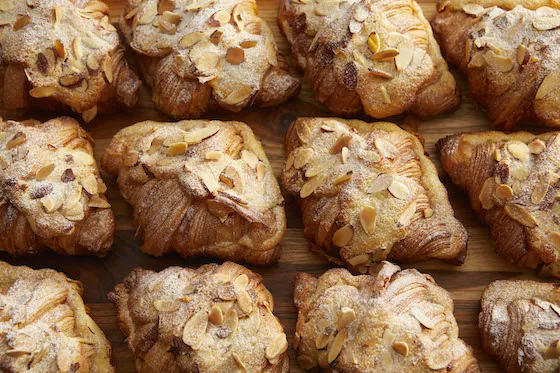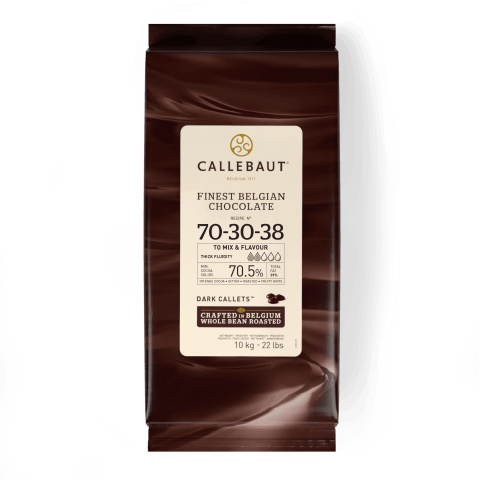Accommodating Dietary Restrictions in Desserts and Baked Goods
Accommodating Dietary Restrictions in Desserts and Baked Goods
Navigating evolving dietary restrictions and health trends can leave a bakery or café owner frustrated and confused. The drive to give customers what they want can seem to be at odds with ideas about what tastes good, what is even possible, quality standards, and the desire to showcase ingredients in a way that allows them to shine.

Do you sometimes feel like this is the only "dessert" that will check ALL the boxes? Take a deep breath. We've got you.
The "Free-From" Challenge
How do you honor a commitment to hospitality and customer service while keeping costs down and staying true to your standards of quality and taste? The truth is it’s a balancing act unique to each bakery, each cafe, and each chef/baker. While we can’t offer you a magic formula to create a menu that will please everyone, we can help explain what customers are looking for and why and offer some guidance as you make decisions about what’s best for your business.

Ingredients Customers May Wish to Avoid and Why
Gluten - gluten is the result of proteins in flour mixing with water and forming stretchy strands that give bread and other baked goods their structure. A small percentage of the population is unable to digest gluten (this is called celiac disease), and it can result in a host of health problems. Some find they feel better when limiting gluten in their diet. Whether this is due to a medical condition, or simply cutting down on processed foods and focusing on fruit and vegetables, our guests want foods that make them feel good and that they can feel good about eating.
Carbs - not quite the “bad boy” they once were, carbohydrates still get a bad rap, and they’re off the table for those following special diets like Keto or Whole30-style plans. The good news is that creating a low-carb recipe can often mean that you’ve created a gluten-free recipe. Sugar is also a carbohydrate and is generally eliminated in low-carb recipes.

Peanuts and tree nuts - Severe nut allergies are rare but very serious. Some customers may have an allergy only to peanuts (which are technically legumes) or only to tree nuts (hazelnuts, walnuts, almonds, etc.), or to both. Cross-contamination occurs when an item that does not contain nuts as an ingredient ends up with trace amounts of nuts or nut oils from another product. This can happen in your shop or earlier on in the production of an ingredient. Due to the seriousness of nut allergies, it is best to inform customers looking for nut-free options if you use nuts in your facility so that they can make an informed decision about the risk of cross-contamination. This is a also good idea when you are offering gluten-free items but use gluten-containing ingredients in other items that you make.
Dairy - Many people experience some degree of difficulty in digesting dairy products. According to the NIH, 68% of the world’s population cannot easily digest lactose (naturally occurring milk sugars), and for some, this results in full lactose intolerance.
Plant-based alternatives to dairy are becoming more and more in demand for this reason and because of an emerging preference for plant-based products.
Eggs and other animal-derived ingredients - Avoiding animal products for reasons of personal health, animal welfare, or environmental concern becomes more common with each generation. Flexitarians, vegetarians, vegans - all eschew ingredients such as dairy, eggs, meat, and cheeses to some degree.

Sugar - overconsumption of sugar has led, directly and indirectly, to a host of health problems. While it’s easy to understand sugar’s appeal, it’s also clear why making an effort to reduce sugar in our diets is in our best interest.
Fat - fats aren’t quite the diet villains they once were, and “good” fats from foods like coconuts, avocado, and olive oil even carry a health halo these days. The fact is, though, fats ring in at 9 calories per gram (as opposed to 4 cal/gram for protein or carbs), and for anyone looking to reduce their caloric intake, a reduction in fat consumption is a necessity.

Honey, figs, some brands of brown sugar - what do these ingredients have in common? None of them are suitable for very strict vegan diets. Ready for another “stealth” animal product? White cane sugar. The bone char used in the bleaching process places cane sugar solidly on the “no” list for vegans. Beet sugar does not undergo this process, and vegan versions of white cane sugar are available. Keep this in mind when evaluating confectioners' sugar and brown sugar as well. This deep dive into sugar processing is just to say that in order to confidently say an item is 100% vegan, you’ll need to research each ingredient you use.
Wow. That’s a Long List! How do I use this information to create baked goods my customers will love and feel good about eating?

Adapting Your Menu to Accommodate Allergies and Special Diets
There’s a popular old chestnut about it being impossible to please all of the people all of the time. Making a plan and choosing which dietary restrictions and health trends will be a part of your menu will save you time, money, and frustration, and being upfront and honest with your guests about your policies and ingredients is the best policy.
Educating yourself and your staff about customer needs, ingredient sources, and the realities of cross-contamination is key. It is unreasonable to expect that you or your staff should become experts in nutrition, allergies, and dietary needs, but a general knowledge of what customers are looking for will help you to assist them in discovering treats and snacks they can feel good about choosing for themselves or their loved ones. Be sure each team member knows the ingredients in each item and the source of those ingredients, and let your customers guide you regarding what items are appropriate for their specific needs.

Chef Julie Sharp's Vegan Cupcakes use 100% traceable Callebaut™ 811
Sustainably sourced ingredients are always a win, so look for opportunities to use products grown, processed, shipped, or sourced in ways that are good for the planet and for the people who grow and produce the item.

Vegan Macarons by Chef Nicolas Dutertre
Macarons are gluten-free and these from Chef Nicolas Dutertre use chickpeas instead of egg whites.
Work smarter by offering items that check more than one box. Can your nut-free brownies also be gluten-free? Can a dairy-free tart also be low-fat? Have you discovered the trick to making fabulous vegan cookies? Making your cookie selection vegan across the board could mean you’re able to buy some specialty ingredients in bulk, saving money; you could avoid cross-contamination, saving labor; and customers know they can select any one of your delicious cookies regardless of whether butter and cane sugar are on the “yes” or the “no” list.










Comments